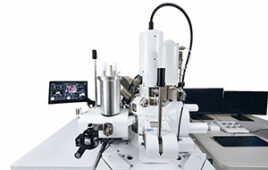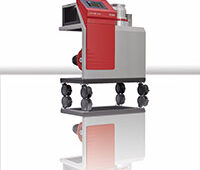 Brix refractometers are a common instrument used to measure the sugar content of a solution. Increasing sugar content leads to an increase in the refractive index. By passing light through a sample and measuring the refraction, the amount that the light bends, the sugar content can be measured. Brix refractometers are calibrated using the brix scale, where one degree brix (°Bx) is equal to 1% sucrose by mass.
Brix refractometers are a common instrument used to measure the sugar content of a solution. Increasing sugar content leads to an increase in the refractive index. By passing light through a sample and measuring the refraction, the amount that the light bends, the sugar content can be measured. Brix refractometers are calibrated using the brix scale, where one degree brix (°Bx) is equal to 1% sucrose by mass.
As well as sucrose, other types of dissolved solids can also affect the refractive index. Therefore, the brix scale only provides an approximate measurement of the sugar content for real food substances.
Traditional refractometers are handheld analogue instruments. They are held up to the light, so that it shines through the sample. The light is then directed through a prism and lenses onto a measurement scale. A shadow will be case on the measurement scale at the angle where total internal reflection occurs. Observing this shadow through the eyepiece gives the brix reading.
Handheld digital refractometers function in a similar way. However, they are more likely to have their own light source and the position of the shadow is automatically detected by an array of photodiodes. The reading is then displayed on a digital display. The more accurate laboratory bench-top refractometers, such as Abbe refractometers, are not normally required for sugar content measurement. However, inline process refractometers, which continuously monitor a fluid flowing over a sensor, may be calibrated to the brix scale for food processing applications.
In order to accurately measure the refractive index, the wavelength of light being refracted must be known. More accurate refractometers therefore control the wavelength of light more accurately. Some do this by filtering daylight but more accurate instruments use a narrow-band LED light source. For the highest accuracy, the sample temperature must also be considered. A brix refractometer may state an acceptable temperature range for measurement, typically either side of 20° C, while the most accurate instruments will use closed-loop thermal control of the sample.





Hi folks my question is can I accurately test my dry grass hay for sugar contact with a refractometer and what would the ratio of water to dry a bit